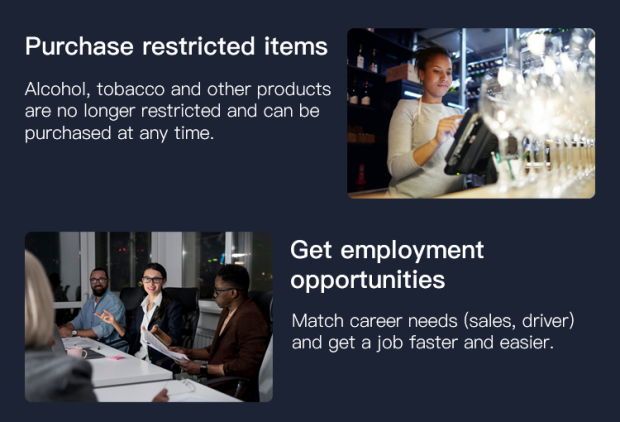Across the United States, driver’s licenses serve as more than just proof of legal driving ability—they act as critical identification tools tailored to individual needs. While the core purpose of verifying age and driving eligibility remains consistent, the design of these licenses shifts noticeably when accounting for varied occupations. From long-haul truckers to rideshare operators, each professional group requires unique elements in their license templates to meet regulatory demands, safety standards, and operational needs.
Why Occupation Shapes License Design
Standard passenger vehicle licenses include basic details: name, photo, date of birth, license number, and expiration date. However, occupations that involve specialized driving tasks demand additional information. These adjustments ensure compliance with federal or state regulations, streamline verification processes for employers, and enhance public safety by clearly marking individuals authorized for specific types of driving.
For example, a commercial truck driver transporting hazardous materials must display endorsements proving they’ve passed specialized training. A rideshare driver, on the other hand, might need a license format that integrates with app-based verification systems, requiring scannable codes or digital fields. Each occupation introduces distinct requirements that mold the template’s structure, data fields, and security features.

Occupation-Specific License Templates Explained
1. Commercial Truck and Bus Drivers (CDL Holders)
Commercial Driver’s Licenses (CDLs) represent one of the most visually distinct templates. Mandated by the Federal Motor Carrier Safety Administration (FMCSA), these licenses include:
- Class Designations: Class A (combination vehicles), Class B (single heavy vehicles), or Class C (smaller commercial vehicles), clearly printed to indicate the type of vehicle the driver is authorized to operate.
- Endorsement Codes: Letters like “H” (hazardous materials), “P” (passengers), or “X” (tank and hazardous materials) are listed, each requiring additional testing and background checks.
- Medical Certification Status: A notation confirming the driver meets FMCSA medical fitness standards, often with an expiration date to ensure ongoing compliance.
- Enhanced Security Features: CDLs frequently include holograms, microprinting, or UV-reactive inks due to their higher risk of fraud, as they grant access to large, potentially dangerous vehicles.
States like California and Texas, with high commercial traffic, often add state-specific symbols or color coding to CDL templates to differentiate them from non-commercial licenses at a glance.
2. Rideshare and Taxi Operators
Drivers for companies like Uber, Lyft, or local taxi services require licenses that simplify passenger and platform verification. Key design elements include:
- Digital Readability: Barcodes or QR codes that link to the driver’s profile on rideshare apps, allowing passengers to cross-check the license photo with the app’s displayed image.
- Endorsement for For-Hire Services: Some states (e.g., New York, Illinois) add a “For-Hire” or “Chauffeur” designation, indicating the driver has passed background checks and vehicle inspections specific to passenger transportation.
- Clear Expiration Tracking: A prominent expiration date to ensure rideshare platforms can automatically flag licenses needing renewal, reducing the risk of unlicensed drivers operating on their networks.
New York City’s TLC (Taxi and Limousine Commission) license, for instance, includes a unique TLC license number alongside the state driver’s license number, creating a dual-identification system for regulatory oversight.
3. Delivery Service Providers
Drivers for postal services (USPS), e-commerce (Amazon), or food delivery (DoorDash) need licenses that balance commercial and personal use. Template adjustments here focus on:
- Vehicle Weight Endorsements: For drivers handling larger delivery vans or trucks, a notation indicating authorization for vehicles over 10,000 pounds (the threshold for commercial licensing in many states).
- Employer Verification Fields: Some templates include a section for employers to stamp or electronically verify the driver’s employment status, aiding in quick checks by warehouse staff or security personnel.
- Restriction Codes: For example, a “K” restriction might indicate the driver only operates within a 100-mile radius, common for local delivery routes, ensuring compliance with hours-of-service regulations.
USPS drivers, who often transport mail across state lines, may have licenses with additional federal identifiers to facilitate cross-state inspections by postal security teams.

4. Government and Law Enforcement Drivers
Personnel operating government vehicles—from police cruisers to public works trucks—require licenses that signal official capacity. Design features include:
- Agency Affiliation: A notation (e.g., “State Patrol” or “City Public Works”) indicating the driver’s employing agency, often in a distinct font or color.
- Specialized Vehicle Authorizations: Codes for emergency response vehicles (e.g., “E” for emergency lights/sirens) or heavy equipment (e.g., “M” for municipal machinery), ensuring only trained personnel operate these assets.
- Redacted Personal Information: In some cases, sensitive details like home addresses are omitted or replaced with agency addresses to protect law enforcement officers’ privacy.
California Highway Patrol (CHP) officers, for example, have licenses that include a CHP badge number and a notation verifying their completion of specialized emergency driving training.
5. Agricultural Vehicle Operators
Farmers and agricultural workers driving tractors, combines, or livestock transporters have unique template needs, often governed by state-specific agricultural departments. Key elements include:
- Seasonal License Designations: Some states issue temporary “farm vehicle” licenses with shorter validity periods, aligning with planting/harvest seasons.
- Geographic Restrictions: A notation limiting operation to specific zones (e.g., “Within 25 miles of farm property”), reducing the need for full commercial licensing for local farm work.
- Age-Based Flexibility: For younger workers (14–17 years old in many states), licenses may include a “Junior Agricultural Driver” designation, waiving standard age requirements with parental or farm employer consent.
Iowa, a state with significant agricultural activity, includes a “Farm Truck” endorsement on licenses, specifying the maximum vehicle weight (often 26,000 pounds) the driver can operate without a full CDL.
Key Design Considerations for Occupation-Specific Templates
When tailoring license templates, state departments of motor vehicles (DMVs) prioritize three factors:
- Regulatory Compliance: Aligning with federal laws (e.g., FMCSA for CDLs, REAL ID Act for security) and state statutes (e.g., rideshare regulations in California’s AB 5).
- User Verification: Ensuring employers, passengers, or inspectors can quickly confirm the driver’s authorization for their role, often through scannable codes or clear text endorsements.
- Security Against Fraud: Incorporating advanced features like laser-engraved photos, RFID chips, or color-shifting inks, especially for licenses granting access to high-risk roles (e.g., hazardous materials transport).
Common Problems & Solutions in Occupation-Specific License Design
Designing these templates isn’t without challenges. Below are frequent issues and actionable fixes:
Problem 1: Confusion Over Endorsement Placement
Issue: Endorsements (e.g., “H” for hazardous materials) are sometimes placed in non-standard locations, leading to delays during inspections or verification.
Solution: Standardize endorsement placement across states, ideally in a dedicated “Endorsements” section near the license number, as recommended by the American Association of Motor Vehicle Administrators (AAMVA).
Problem 2: Outdated Templates for Emerging Occupations
Issue: New roles like drone delivery support drivers or electric scooter fleet managers lack defined template guidelines, causing inconsistencies in verification.
Solution: State DMVs should form advisory boards with industry representatives to update templates biannually, ensuring emerging occupations are included in design protocols.
Problem 3: Security Risks with Custom Data Fields
Issue: Adding occupation-specific fields (e.g., employer IDs) increases the risk of data theft if not properly secured.
Solution: Use encrypted QR codes instead of printed employer details. These codes can be scanned to reveal verified information without exposing sensitive data on the physical license.
Problem 4: Misalignment Between State and Federal Standards
Issue: A CDL with a hazardous materials endorsement in Texas might have different security features than one in Florida, complicating cross-state inspections.
Solution: Adopt AAMVA’s national template guidelines, which outline minimum security and data field requirements, ensuring consistency while allowing for state-specific branding.
Problem 5: Readability Issues with Overcrowded Templates
Issue: Adding multiple endorsements, restrictions, and occupation notes can make licenses hard to read, especially for older drivers or during quick checks.
Solution: Use color coding (e.g., blue for endorsements, red for restrictions) and simplify font sizes, ensuring critical information (name, photo, expiration) remains the most prominent elements.

